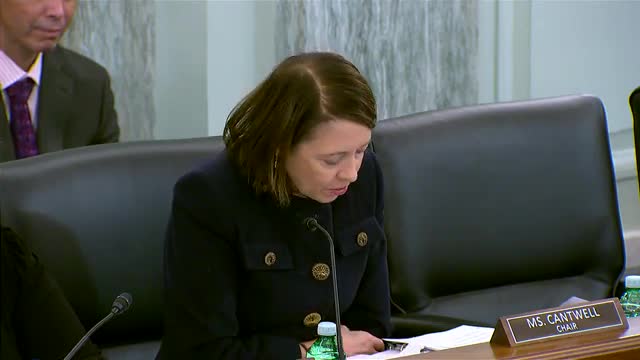Senators push for urgent aviation safety technology upgrades
November 10, 2023 | Commerce, Science, and Transportation: Senate Committee, Standing Committees - House & Senate, Congressional Hearings Compilation
This article was created by AI summarizing key points discussed. AI makes mistakes, so for full details and context, please refer to the video of the full meeting. Please report any errors so we can fix them. Report an error »

In a recent government meeting focused on aviation safety, significant discussions emerged regarding the implementation of advanced technology to enhance safety measures in the national airspace. Key topics included the urgent need for funding to upgrade air traffic control systems and cockpit alerting technologies, as well as the importance of modern flight simulators for pilot training.
Senators expressed strong support for a proposed funding increase of $18.2 billion over five years aimed at upgrading large and midsize airports. This investment is seen as crucial for deploying air surface detection equipment that can illuminate potential risks in busy environments, thereby improving situational awareness for both pilots and air traffic controllers.
Chairwoman Jennifer Homendy emphasized the necessity of integrating technology into cockpit systems to alert pilots of potential runway incursions and other hazards. She noted that while the implementation of these technologies could take nearly a year, their deployment is essential to prevent near misses and enhance overall safety.
Senator Kyrsten Sinema highlighted the importance of utilizing advanced flight simulators for training air traffic controllers, allowing them to practice emergency scenarios without risking actual aircraft. She reiterated the need for the FAA to adopt modern training tools to ensure the highest safety standards in aviation.
The meeting also addressed the staffing challenges faced by air traffic control facilities, with discussions on reviving the Collegiate Training Initiative (CTI) program to streamline hiring processes. Additionally, concerns were raised about budget constraints limiting the rollout of critical modernization technologies, such as the Terminal Flight Data Manager (TFDM) program, which enhances controllers' situational awareness.
Senator Amy Klobuchar proposed an amendment to the FAA bill aimed at directing the agency to issue recommendations on cockpit alerting technologies, underscoring the need for proactive measures to prevent runway incursions.
Overall, the meeting underscored a collective commitment among lawmakers to prioritize aviation safety through technological advancements and adequate funding, with a clear recognition that timely action is essential to prevent future tragedies.
Senators expressed strong support for a proposed funding increase of $18.2 billion over five years aimed at upgrading large and midsize airports. This investment is seen as crucial for deploying air surface detection equipment that can illuminate potential risks in busy environments, thereby improving situational awareness for both pilots and air traffic controllers.
Chairwoman Jennifer Homendy emphasized the necessity of integrating technology into cockpit systems to alert pilots of potential runway incursions and other hazards. She noted that while the implementation of these technologies could take nearly a year, their deployment is essential to prevent near misses and enhance overall safety.
Senator Kyrsten Sinema highlighted the importance of utilizing advanced flight simulators for training air traffic controllers, allowing them to practice emergency scenarios without risking actual aircraft. She reiterated the need for the FAA to adopt modern training tools to ensure the highest safety standards in aviation.
The meeting also addressed the staffing challenges faced by air traffic control facilities, with discussions on reviving the Collegiate Training Initiative (CTI) program to streamline hiring processes. Additionally, concerns were raised about budget constraints limiting the rollout of critical modernization technologies, such as the Terminal Flight Data Manager (TFDM) program, which enhances controllers' situational awareness.
Senator Amy Klobuchar proposed an amendment to the FAA bill aimed at directing the agency to issue recommendations on cockpit alerting technologies, underscoring the need for proactive measures to prevent runway incursions.
Overall, the meeting underscored a collective commitment among lawmakers to prioritize aviation safety through technological advancements and adequate funding, with a clear recognition that timely action is essential to prevent future tragedies.
View the Full Meeting & All Its Details
This article offers just a summary. Unlock complete video, transcripts, and insights as a Founder Member.
✓
Watch full, unedited meeting videos
✓
Search every word spoken in unlimited transcripts
✓
AI summaries & real-time alerts (all government levels)
✓
Permanent access to expanding government content
30-day money-back guarantee
